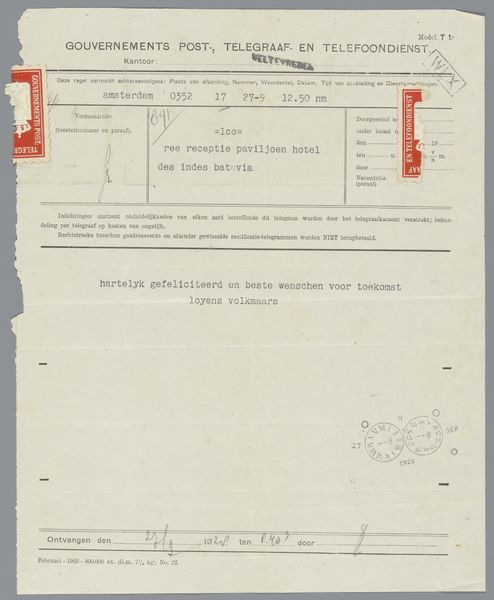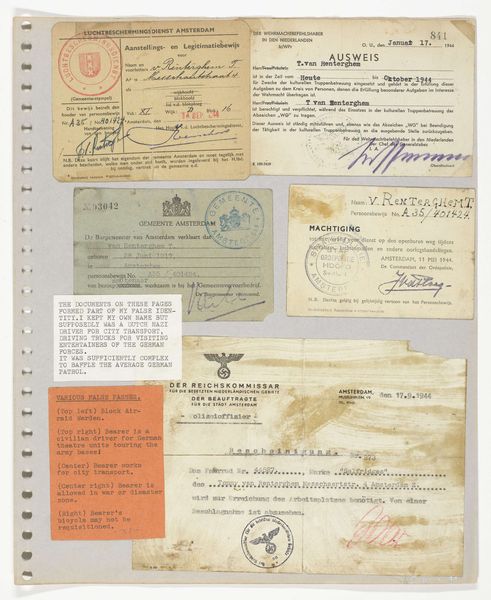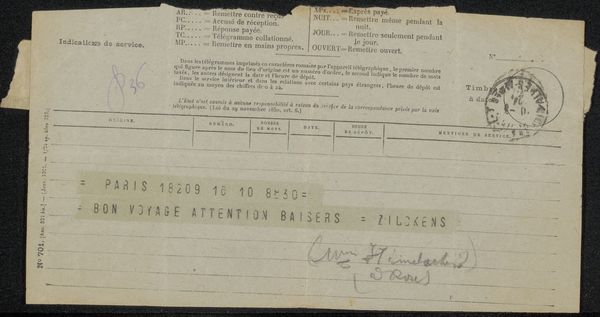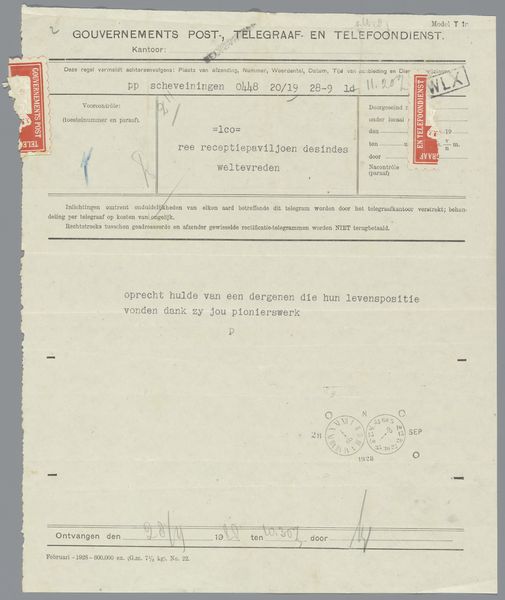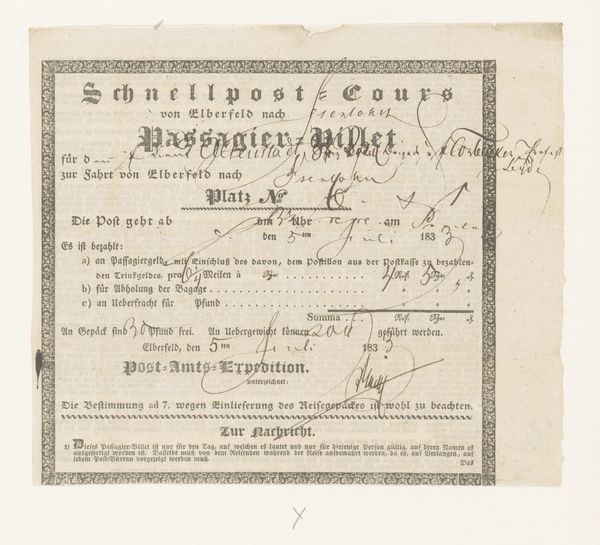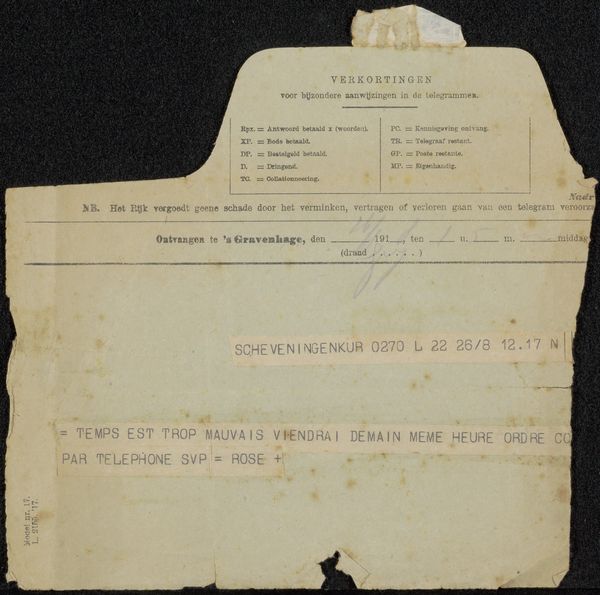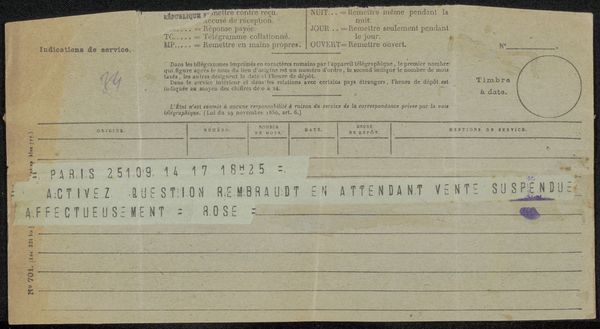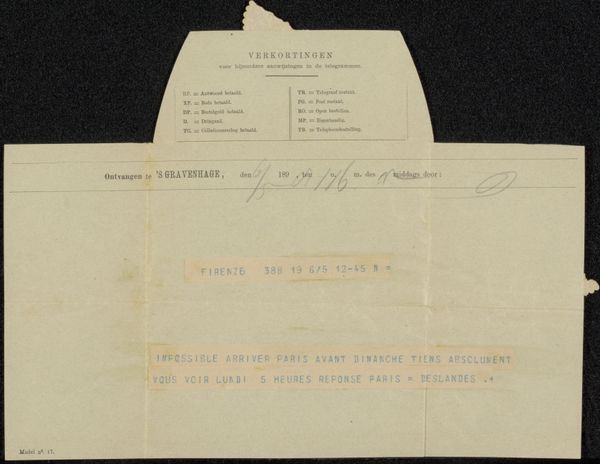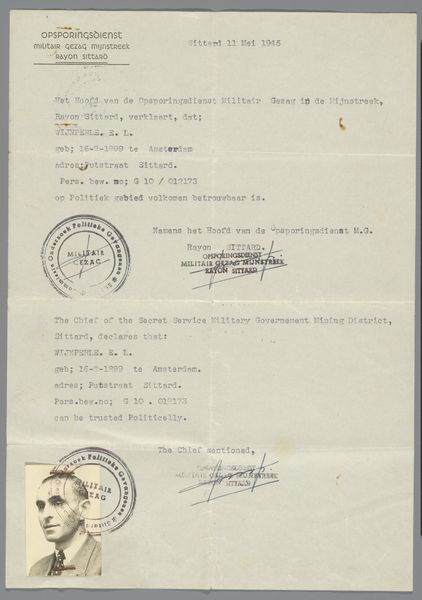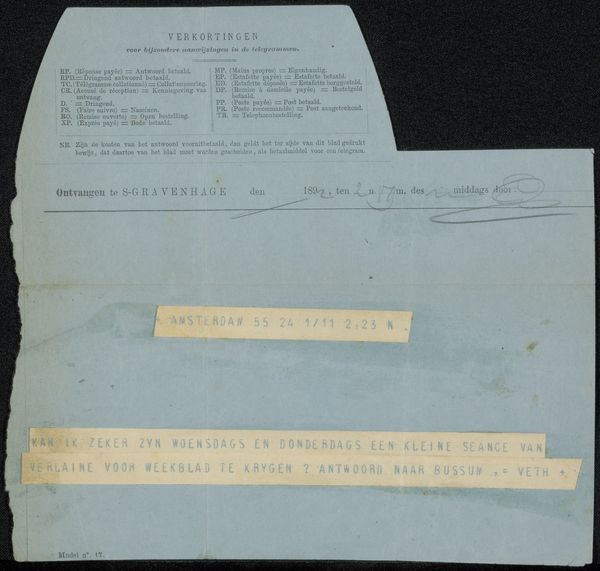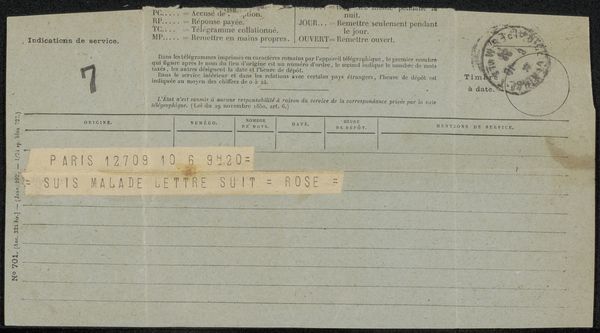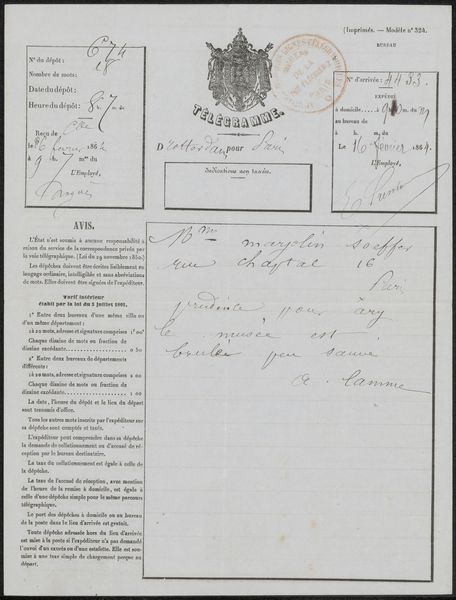
paper, photography
#
paper
#
photography
#
history-painting
Copyright: Rijks Museum: Open Domain
Editor: This object, “Formulieren voor bordeelbezoek,” or "Forms for Brothel Visits," appears to be a photograph of some documents, possibly dating from 1940 to 1945. I’m immediately struck by how ordinary it looks, despite the loaded subject matter. What cultural narratives do you see embedded within these forms? Curator: These aren’t just ordinary forms; they're chilling documents that speak volumes about the institutionalization of sexual exploitation during wartime. The cold, bureaucratic language and official stamps create a stark contrast with the intimacy and potential trauma they represent. I see a confluence of power, control, and the reduction of human beings to mere statistics. Note how the repeated stamps and signatures seem to validate and normalize the practice. How do you interpret the inclusion of hygiene protocols on these forms? Editor: It’s disturbing how clinical and matter-of-fact the language is, particularly the emphasis on rubber contraceptives and immediate sanitation. It seems like disease control was prioritized over the women's well-being. It’s all presented in a disturbingly orderly and regulated manner. It's as if the institution wanted to regulate the moral consequences too. Curator: Exactly. The symbols and language serve a dual purpose: to maintain the health of the soldiers, but also to project an image of control and order amidst the chaos of war. The repeated phrases and structured layout create a psychological effect, reinforcing a sense of normalcy. It transforms a deeply exploitative practice into a routine administrative task. What does that kind of formalization evoke for you? Editor: A very strange type of authority, maybe an official sanctioning of an incredibly personal transaction. Thanks, it helps to understand the deep roots and lingering impact that symbols and language can have in shaping perceptions and perpetuating ideologies. Curator: Precisely. Recognizing the complex web of meaning embedded within such artifacts allows us to confront uncomfortable truths about the past, acknowledging the long shadow of these normalized attitudes.
Comments
No comments
Be the first to comment and join the conversation on the ultimate creative platform.
